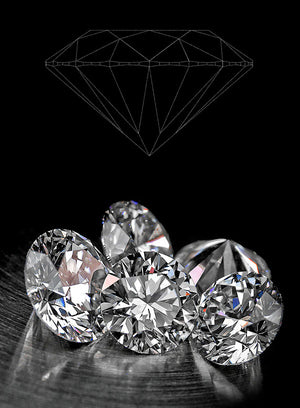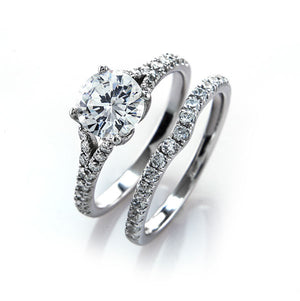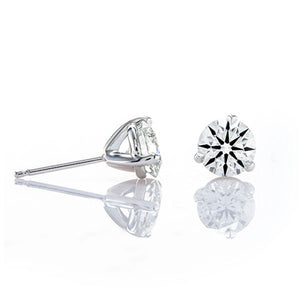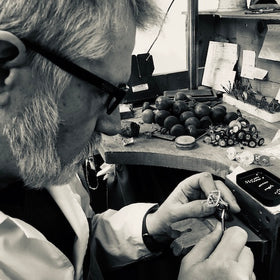
Buyers guide: understanding the Four C's of diamonds
When selecting a diamond for someone special (or for yourself), it's important to know what makes each diamond unique. For novice jewelry buyers, the four C's are important terms to know; cut, color, clarity and carat weight of the diamond are meant to help buyers and jewelers define the brilliance, quality and overall value.
Diamond cut
The cut of a diamond is often measured by two things: the precise dimensions and dimensions of the finished diamond. A pristine cut diamond reflects light, which is why some diamonds have more sparkle to them than others. The depth of the stone can also help or hinder the overall brilliance of the diamond. Round brilliant-cut diamonds are the most popular diamond shape because jewelers have continued to develop and manipulate these particular cuts down to a mathematical science. Round diamonds are often made into 58-facet cuts that are divided along the crown, girdle and pavilion to achieve maximum brilliance. According to the Diamond Buying Guide, round brilliant-cut diamonds make up 75 percent of the marketplace today.
Color
There are several factors that determine the color quality of a diamond. Jewelers adhere to a world-wide color diamond grading system. The guide consists of letters, starting from the letter D all the way to the letter Z. The letter rank for each diamond tells the jeweler and buyer whether or not the diamond is colored or colorless. Shade differences range from colorless to a light yellow. Colorless diamonds are considered to be pristine and more valuable than colored diamonds because there is no tinge to cloud the overall clarity of the stone. Diamonds that are marked with the letter D through J are ranked as colorless or nearly colorless. Faint yellow diamonds will have a letter K, L or M. Those with a light yellow tint fall between the letter N and R. A very yellow diamond will have a letter mark anywhere from S to Z and are the least valuable.
Carat weight
Many buyers (especially those looking to purchase an engagement ring) will focus on the carat weight of the diamond. Total carat weight (T.W.) stands for the total amount of weight concerning all of the stones in a piece of jewelry. For instance, if you have a circle brilliant cut diamond in the center of a ring and baguettes on either side of the center stone, all three diamonds are measured to achieve the total carat weight, which is often represented by the rule of fourths (i.e. 1/4, 1/2, 3/4, 1 ct, 1 1/2 ct, etc.)
The carat weight of an individual stone is counted in milligrams. A one carat diamond stone is equal to 200 milligrams, which is then translated into 0.2 grams. This is the weight of a single stone, not all of the diamonds that are used throughout the entire piece of jewelry.
Overall clarity
The overall clarity of a diamond is determined by the color and amount of imperfections in of the stone. During the formation of the diamond, dirt, minerals and crystals can become trapped in the stone, causing impurities. Although nearly all diamonds have tiny imperfections, the more visible these marking are, the less brilliant a diamond looks.
Imperfections are commonly referred to as inclusions in the jewelry industry. When shopping for diamonds, you'll want to keep another chart in mind in addition to the color scale. Diamond clarity is ranked with abbreviations that range from internationally flawless to visible inclusions. Flawless diamonds are marked with the letter F, meaning that there are no internal or external flaws; this particular kind of clarity is extremely rare. Internationally flawless diamonds (marked IF) are extremely rare and will come with a hefty price. VVS1 and VVS2 are used to rank stones with very, very slight inclusions. VS1 and VS2 stand for very slight inclusions, while SI1 and SI2 represent those diamonds that have slight inclusions. Imperfections that are detectable by the human eye are ranked with an I1, I2 or I3 for visible inclusions.
















